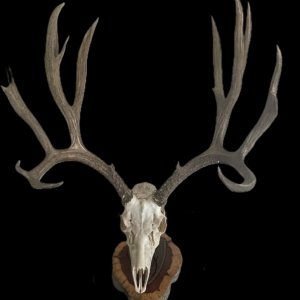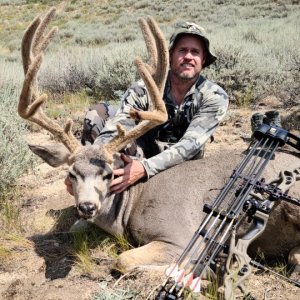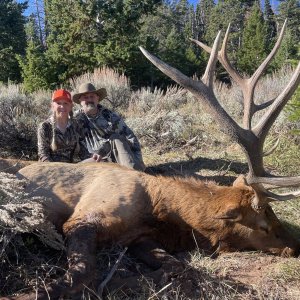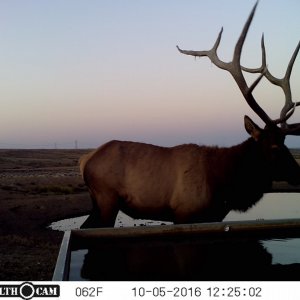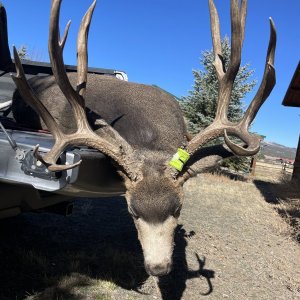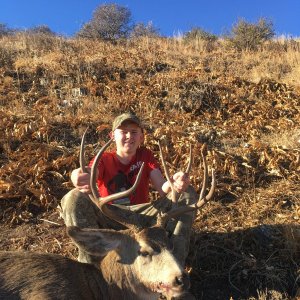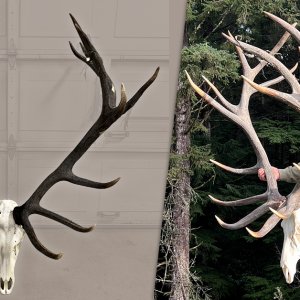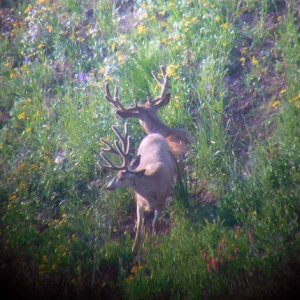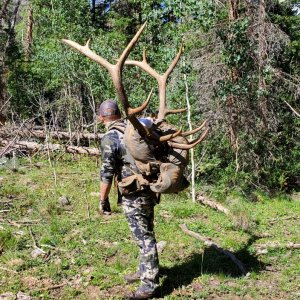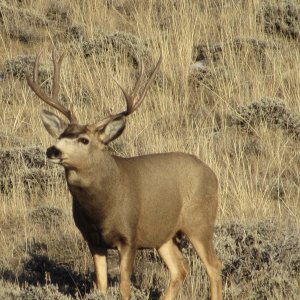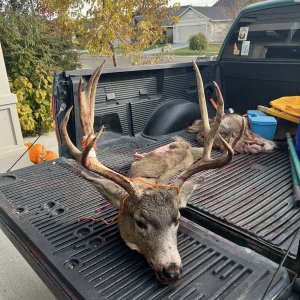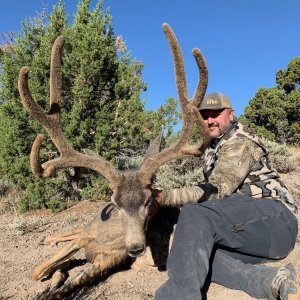bowhunt
Long Time Member
- Messages
- 3,191
I thought this was very helpful!
Guide to buying your hunting pack.
It is that time of year again when guys are busting out their old pack and getting in the mountains and scouting for their fall hunts. I read all the time on the forums, guys asking, ?Which pack should I use for my hunt this year?? The first thing you need to do is have a pack that fits you properly.
The first thing you need to determine is Torso Length. You will hear all of the non-hunting pack companies talk about this but very few hunting pack companies will. This is the most important step in getting a pack fitted for you and getting it to fit comfortably.
Here?s how to measure your torso length.
Have a friend locate your C7 vertebra which is the bony bump on the base of your neck. Use a flexible tape measure and start measuring from this point. Place your hands on your hips so you can feel your iliac crest, which serves as the "shelf" of your pelvic girdle. It's the first hard thing you feel when you run your fingers down from the sides of your ribcage. Position your hands so your thumbs are reaching behind you. Have your friend measure down to this point in between your thumbs. This is your torso length.
The reason figuring out your torso length is so important is because of the load lifters. If you have a long torso and the stays or frame of the pack are too short for your torso, you will get little to no ?lift?; and depending on your hunting pack needs (will discuss later) this could be bad. The angle of the load lifter strap should be 15-45 degrees and this angle should increase as the pack weight increases.
The idea behind a load lifter is quite simple. When you pull on the load lifter adjustment straps, you are pulling your shoulder straps upward and off of your actual shoulders. This will transfer the weight of your pack frame from your shoulders to your hips, so you are not actually lifting the pack at all, but lifting the shoulder straps off of your shoulders for weight transfer. You should be able to freely move your arms up above your head with a loaded pack if you have everything adjusted correctly. There should be a small gab between your shoulder strap and the top of your shoulder.
A pack with proper load lifters should keep about 75% of the total weight off your shoulders. With 30lbs in the pack it really is no big deal, but once you get above the 50-60lb range this becomes really important as your shoulders will fatigue very quickly and pain will set in.
What are going to be my uses for my pack?
To go any further in selecting a pack you need to ask yourself the following questions.
? Will you be using the pack as a day pack, multi daypack, meat hauler or a little of each?
? What style of hunting will you be doing? Do you do bivy hunts, spike camp hunts, day hunts; get packed in by horses etc?? How many total days do you plan to be out hunting at one time?
? How much weight are you planning to carry in your pack once an animal is down? Most packs will carry the 40-45lbs needed for a week long back country hunt, but can they handle the load of meat on your way out? Are you capable of even carrying more weight than this or do you call a packer with horses for your load out?
? Are you an ounce counting weenie or are you more concerned with durability of your pack?
? Does the pack company have a great reputation and do they warranty their work?
? Do you have ultra light, low volume gear? Or are you still lugging around that 5 lb sleeping bag and 10lb tent you bought at Wal-Mart?
Once you have these questions answered and figured out, you should have a general idea of what you are looking for. Next you will need to find out some detailed features that are ?wanted? but not necessarily ?needed?.
Do you carry a spotting scope and tripod and does it have a separate compartment?
Does the waist belt have pockets, or do you like to attach your own?
Is the pack small enough to use as a day pack once you drop camp?
Is the pack hydration bladder compatible?
Do you like a million pockets to store your tooth brushes and nick nacks or do you like to store things in ditty sacks in side your pack?
Any other personal features can be thrown in there as well, but this should give you a good idea of what you are looking for in a pack? Next, you need to find packs that meet your criteria and see which one feels the best to you.
Now let me tell you my top features I like to have in a pack when I was choosing my hunting pack.
? Comfortable rigid suspension with load lifters.
? Fit and comfort while carrying heavy loads.
? Pack durability
? Compressibility for day hunting
? Total pack weight
? Bang for my buck (does the pack cover all of my needs or am I going to need a second pack to cover all of my hunting needs)
My list is more geared towards over night bivy/spike camp hunts and heavy load hauling. I do not like the comfort of a frame pack and I like to be able to carry a large first load of meat out with my hunting pack. Chances are you may need more than one pack to cover all of your needs well. Especially if you are buying a cheaper pack as they really start to show their flaws with 80+lbs in them.
Buying 2 packs can get expensive and so I have chosen to buy and use the Kifaru Timberline 2 at sub 6lbs it is as light as a badlands 2200 and I have hauled 120lbs loads in mine and it doesn't even break a sweat. One last thing to consider on a packs volume, you have to take into consideration the pack out. If you are going to pack an entire deboned deer or sheep out with camp you will need a larger pack. I could fit 7 days worth of gear in a 4000 cubic inch pack but I have no extra room. You can always synch a pack down, but you can't make a smaller pack bigger.
I hope this list helps you out and in my opinion for DIY back country hunts a pack is the second most important piece of gear (Boots are number 1). If you have any questions shoot us an email or put them in the comment section.
Good Luck
Cameron
IreviewGear.com
Guide to buying your hunting pack.
It is that time of year again when guys are busting out their old pack and getting in the mountains and scouting for their fall hunts. I read all the time on the forums, guys asking, ?Which pack should I use for my hunt this year?? The first thing you need to do is have a pack that fits you properly.
The first thing you need to determine is Torso Length. You will hear all of the non-hunting pack companies talk about this but very few hunting pack companies will. This is the most important step in getting a pack fitted for you and getting it to fit comfortably.
Here?s how to measure your torso length.
Have a friend locate your C7 vertebra which is the bony bump on the base of your neck. Use a flexible tape measure and start measuring from this point. Place your hands on your hips so you can feel your iliac crest, which serves as the "shelf" of your pelvic girdle. It's the first hard thing you feel when you run your fingers down from the sides of your ribcage. Position your hands so your thumbs are reaching behind you. Have your friend measure down to this point in between your thumbs. This is your torso length.
The reason figuring out your torso length is so important is because of the load lifters. If you have a long torso and the stays or frame of the pack are too short for your torso, you will get little to no ?lift?; and depending on your hunting pack needs (will discuss later) this could be bad. The angle of the load lifter strap should be 15-45 degrees and this angle should increase as the pack weight increases.
The idea behind a load lifter is quite simple. When you pull on the load lifter adjustment straps, you are pulling your shoulder straps upward and off of your actual shoulders. This will transfer the weight of your pack frame from your shoulders to your hips, so you are not actually lifting the pack at all, but lifting the shoulder straps off of your shoulders for weight transfer. You should be able to freely move your arms up above your head with a loaded pack if you have everything adjusted correctly. There should be a small gab between your shoulder strap and the top of your shoulder.
A pack with proper load lifters should keep about 75% of the total weight off your shoulders. With 30lbs in the pack it really is no big deal, but once you get above the 50-60lb range this becomes really important as your shoulders will fatigue very quickly and pain will set in.
What are going to be my uses for my pack?
To go any further in selecting a pack you need to ask yourself the following questions.
? Will you be using the pack as a day pack, multi daypack, meat hauler or a little of each?
? What style of hunting will you be doing? Do you do bivy hunts, spike camp hunts, day hunts; get packed in by horses etc?? How many total days do you plan to be out hunting at one time?
? How much weight are you planning to carry in your pack once an animal is down? Most packs will carry the 40-45lbs needed for a week long back country hunt, but can they handle the load of meat on your way out? Are you capable of even carrying more weight than this or do you call a packer with horses for your load out?
? Are you an ounce counting weenie or are you more concerned with durability of your pack?
? Does the pack company have a great reputation and do they warranty their work?
? Do you have ultra light, low volume gear? Or are you still lugging around that 5 lb sleeping bag and 10lb tent you bought at Wal-Mart?
Once you have these questions answered and figured out, you should have a general idea of what you are looking for. Next you will need to find out some detailed features that are ?wanted? but not necessarily ?needed?.
Do you carry a spotting scope and tripod and does it have a separate compartment?
Does the waist belt have pockets, or do you like to attach your own?
Is the pack small enough to use as a day pack once you drop camp?
Is the pack hydration bladder compatible?
Do you like a million pockets to store your tooth brushes and nick nacks or do you like to store things in ditty sacks in side your pack?
Any other personal features can be thrown in there as well, but this should give you a good idea of what you are looking for in a pack? Next, you need to find packs that meet your criteria and see which one feels the best to you.
Now let me tell you my top features I like to have in a pack when I was choosing my hunting pack.
? Comfortable rigid suspension with load lifters.
? Fit and comfort while carrying heavy loads.
? Pack durability
? Compressibility for day hunting
? Total pack weight
? Bang for my buck (does the pack cover all of my needs or am I going to need a second pack to cover all of my hunting needs)
My list is more geared towards over night bivy/spike camp hunts and heavy load hauling. I do not like the comfort of a frame pack and I like to be able to carry a large first load of meat out with my hunting pack. Chances are you may need more than one pack to cover all of your needs well. Especially if you are buying a cheaper pack as they really start to show their flaws with 80+lbs in them.
Buying 2 packs can get expensive and so I have chosen to buy and use the Kifaru Timberline 2 at sub 6lbs it is as light as a badlands 2200 and I have hauled 120lbs loads in mine and it doesn't even break a sweat. One last thing to consider on a packs volume, you have to take into consideration the pack out. If you are going to pack an entire deboned deer or sheep out with camp you will need a larger pack. I could fit 7 days worth of gear in a 4000 cubic inch pack but I have no extra room. You can always synch a pack down, but you can't make a smaller pack bigger.
I hope this list helps you out and in my opinion for DIY back country hunts a pack is the second most important piece of gear (Boots are number 1). If you have any questions shoot us an email or put them in the comment section.
Good Luck
Cameron
IreviewGear.com

